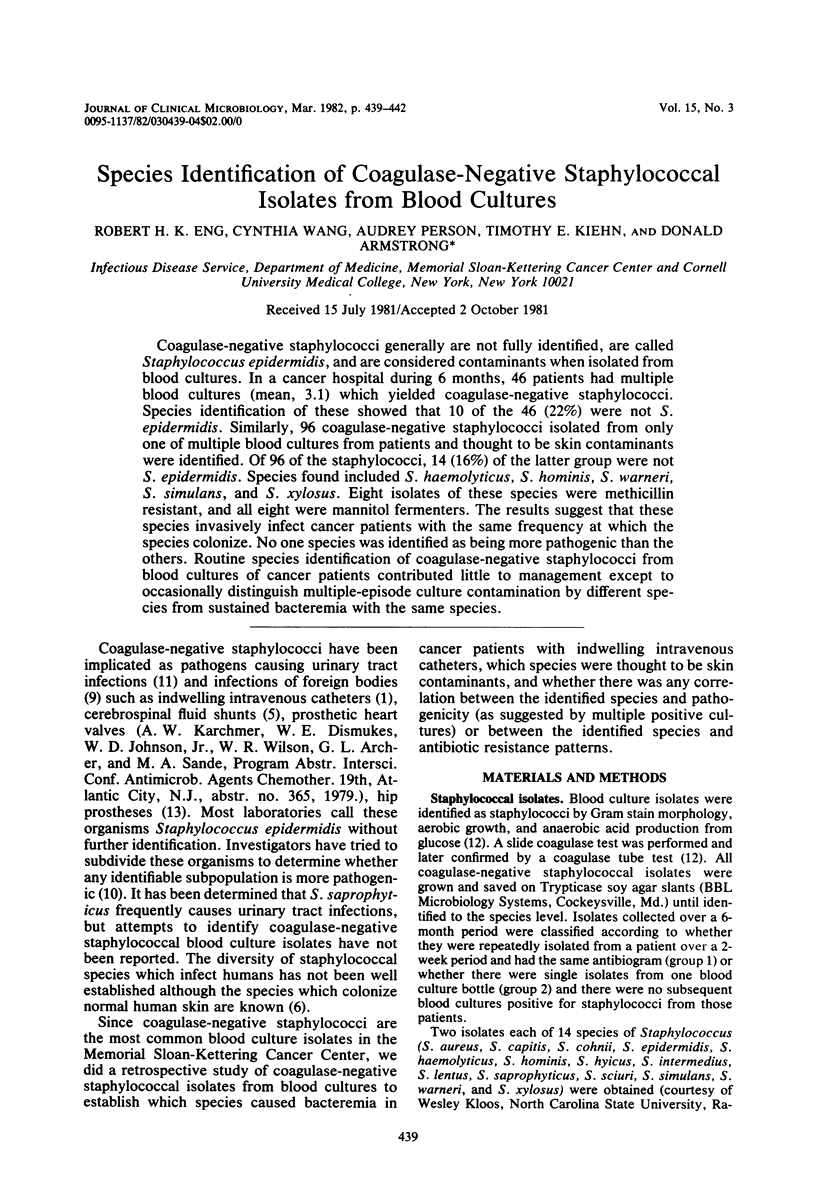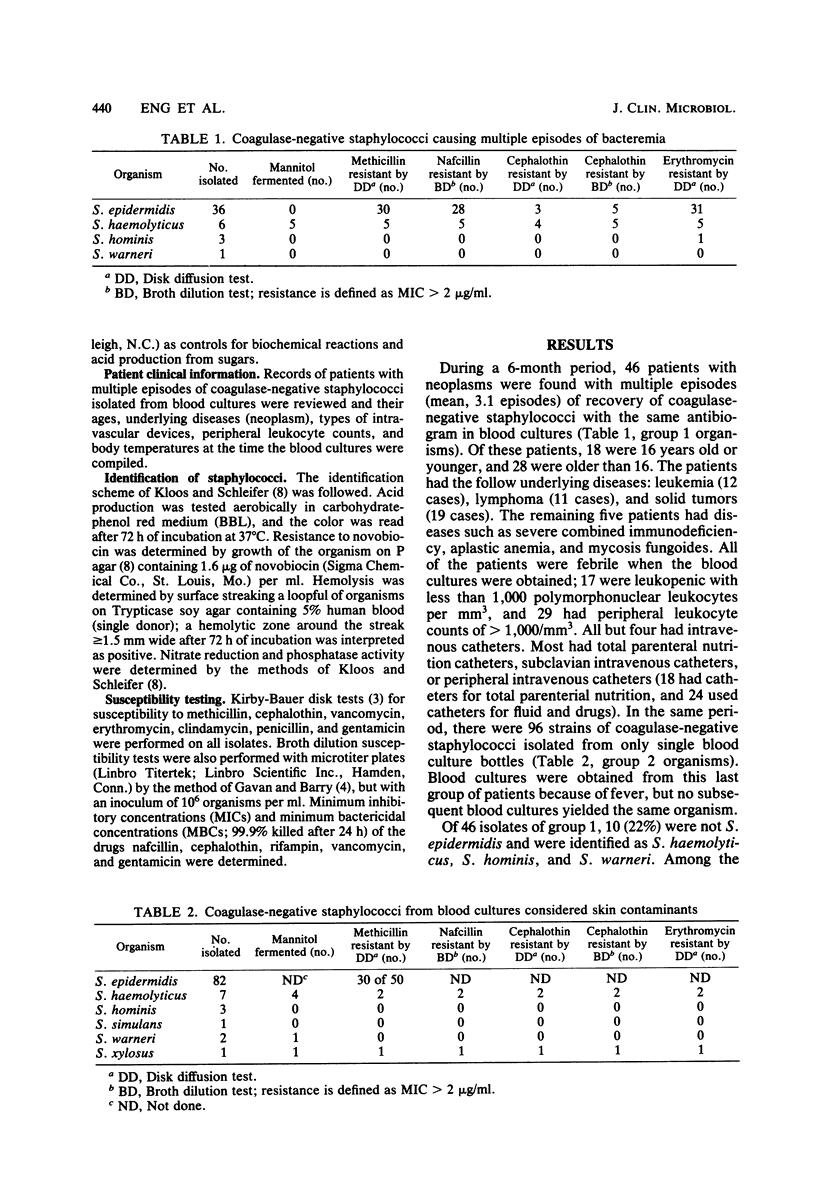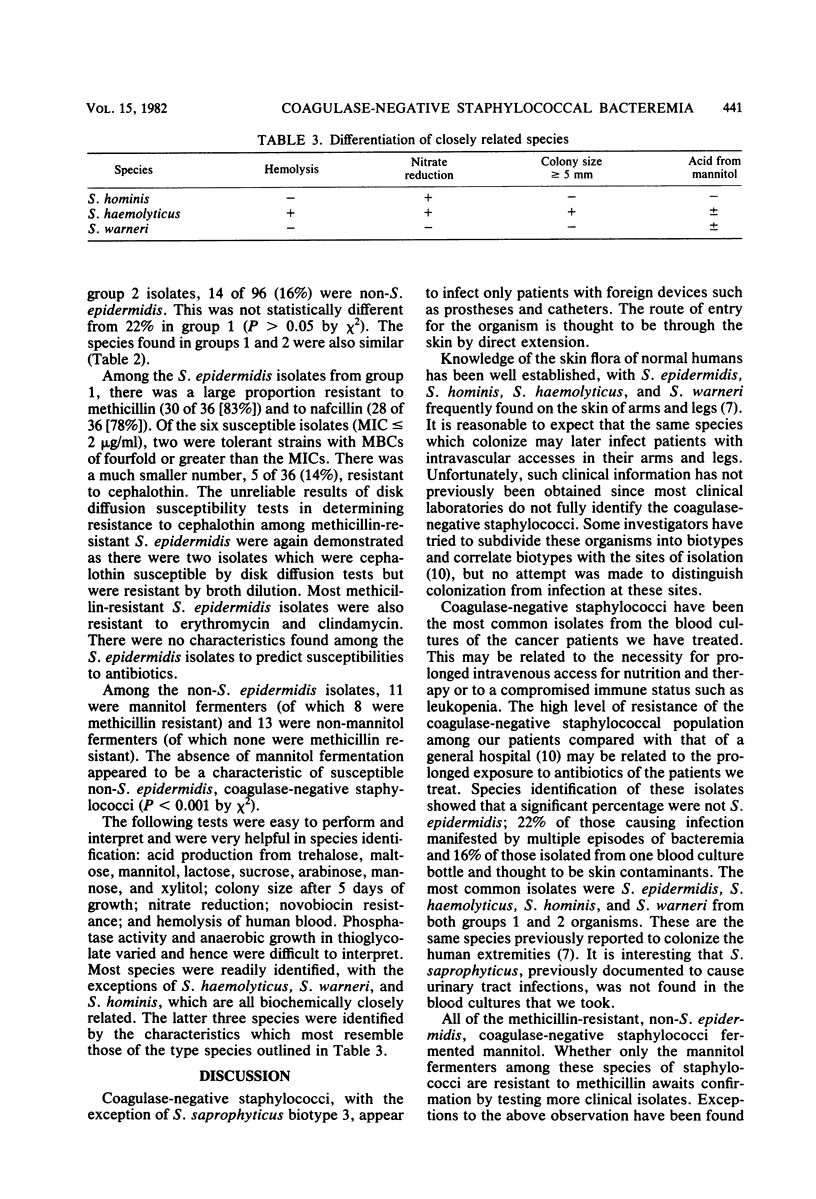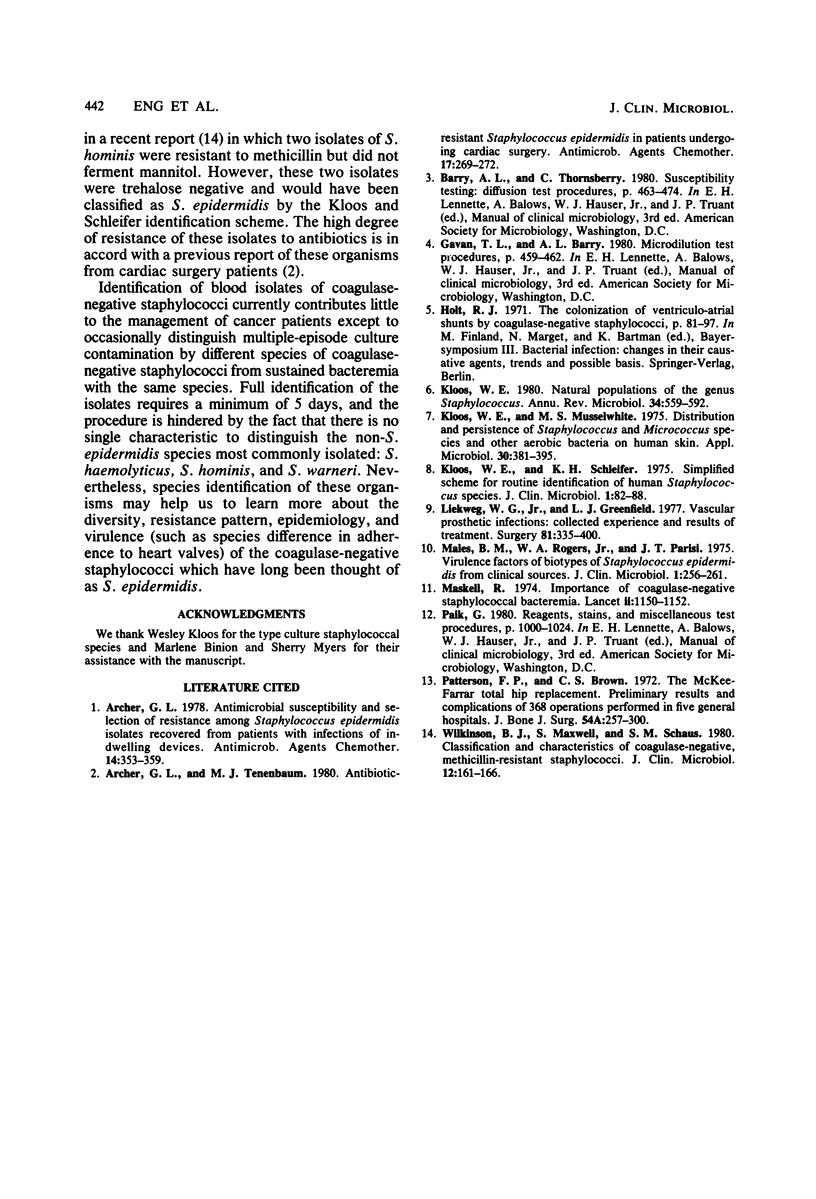Abstract
Coagulase-negative staphylococci generally are not fully identified, are called Staphylococcus epidermidis, and are considered contaminants when isolated from blood cultures. In a cancer hospital during 6 months, 46 patients had multiple blood cultures (mean, 3.1) which yielded coagulase-negative staphylococci. Species identification of these showed that 10 of the 46 (22%) were not S. epidermidis. Similarly, 96 coagulase-negative staphylococci isolated from only one of multiple blood cultures from patients and thought to be skin contaminants were identified. Of 96 of the staphylococci, 14 (16%) of the latter group were not S. epidermidis. Species found included S. haemolyticus, S. hominis, S. warneri, S. simulans, and S. xylosus. Eight isolates of these species were methicillin resistant, and all eight were mannitol fermenters. The results suggest that these species invasively infect cancer patients with the same frequency at which the species colonize. No one species was identified as being more pathogenic than the others. Routine species identification of coagulase-negative staphylococci from blood cultures of cancer patients contributed little to management except to occasionally distinguish multiple-episode culture contamination by different species from sustained bacteremia with the same species.
Full text
PDF



Selected References
These references are in PubMed. This may not be the complete list of references from this article.
- Archer G. L. Antimicrobial susceptibility and selection of resistance among Staphylococcus epidermidis isolates recovered from patients with infections of indwelling foreign devices. Antimicrob Agents Chemother. 1978 Sep;14(3):353–359. doi: 10.1128/aac.14.3.353. [DOI] [PMC free article] [PubMed] [Google Scholar]
- Archer G. L., Tenenbaum M. J. Antibiotic-resistant Staphylococcus epidermidis in patients undergoing cardiac surgery. Antimicrob Agents Chemother. 1980 Feb;17(2):269–272. doi: 10.1128/aac.17.2.269. [DOI] [PMC free article] [PubMed] [Google Scholar]
- Kloos W. E., Musselwhite M. S. Distribution and persistence of Staphylococcus and Micrococcus species and other aerobic bacteria on human skin. Appl Microbiol. 1975 Sep;30(3):381–385. doi: 10.1128/am.30.3.381-395.1975. [DOI] [PMC free article] [PubMed] [Google Scholar]
- Kloos W. E. Natural populations of the genus Staphylococcus. Annu Rev Microbiol. 1980;34:559–592. doi: 10.1146/annurev.mi.34.100180.003015. [DOI] [PubMed] [Google Scholar]
- Kloos W. E., Schleifer K. H. Simplified scheme for routine identification of human Staphylococcus species. J Clin Microbiol. 1975 Jan;1(1):82–88. doi: 10.1128/jcm.1.1.82-88.1975. [DOI] [PMC free article] [PubMed] [Google Scholar]
- Liekweg W. G., Jr, Greenfield L. J. Vascular prosthetic infections: collected experience and results of treatment. Surgery. 1977 Mar;81(3):335–342. [PubMed] [Google Scholar]
- Males B. M., Rogers W. A., Jr, Parisi J. T. Virulence factors of biotypes of Staphylococcus epidermidis from clinical sources. J Clin Microbiol. 1975 Mar;1(3):256–261. doi: 10.1128/jcm.1.3.256-261.1975. [DOI] [PMC free article] [PubMed] [Google Scholar]
- Patterson F. P., Brown C. S. The McKee-Farrar total hip replacement. Preliminary results and complications of 368 operations performed in five general hospitals. J Bone Joint Surg Am. 1972 Mar;54(2):257–275. [PubMed] [Google Scholar]
- Wilkinson B. J., Maxwell S., Schaus S. M. Classification and characteristics of coagulase-negative, methicillin-resistant staphylococci. J Clin Microbiol. 1980 Aug;12(2):161–166. doi: 10.1128/jcm.12.2.161-166.1980. [DOI] [PMC free article] [PubMed] [Google Scholar]


